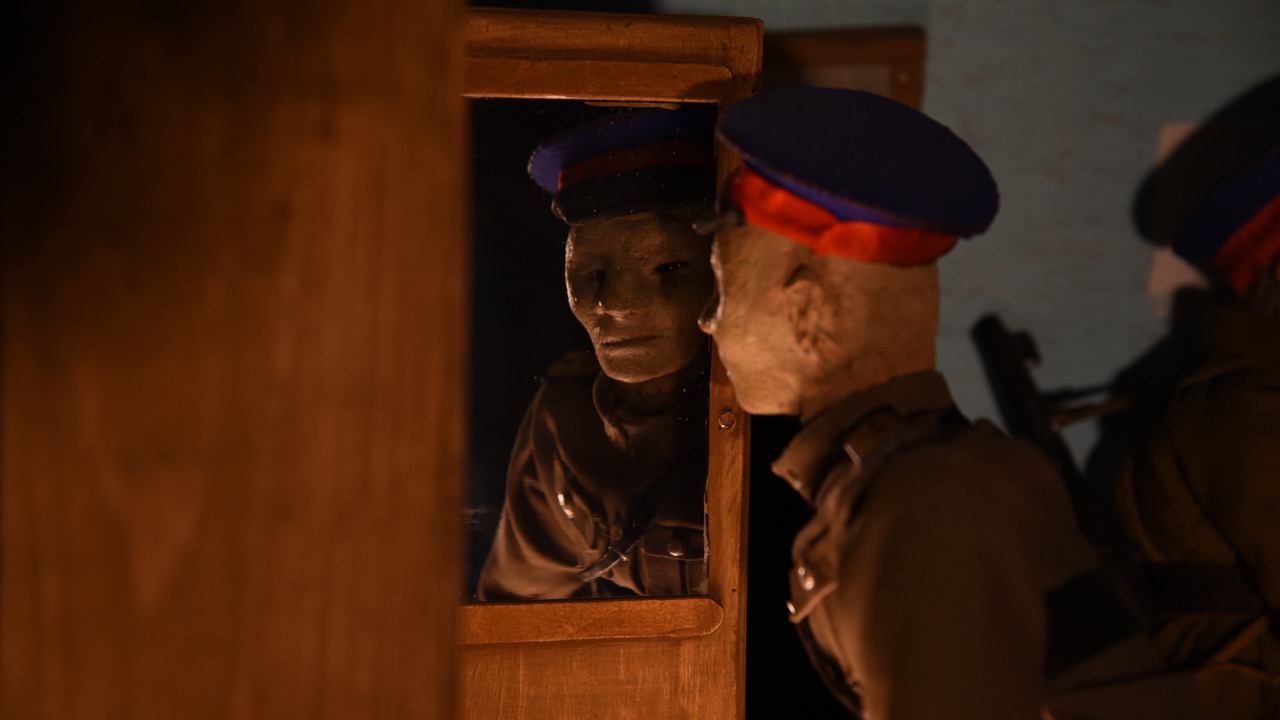
Aktuell

Ghenadie Popescu, Filmstill Elena Severin's story, 2022 © Ghenadie Popescu
RESIDUAL
GHENADIE POPESCU
Eröffnung: 17.10.2025, 18.30 Uhr
Ausstellungsdauer: 18.10.–29.11.2025
Öffnungszeiten: Mi–Sa, 10.30–17.00 Uhr
Der moldawische Künstler Ghenadie Popescu (geb. 1971) reflektiert in seinen Objekten, Performances, Filmen und Animationen kollektive Bilder und Vorstellungen kultureller und politischer Identität. Seine Arbeiten setzen dabei konkret und oftmals lokal an, zielen aber unterschwellig stets auch auf universelle Fragen ab. Vor dem Hintergrund der postkommunistischen Geschichte und Gegenwart Moldawiens wendet er Beobachtungen, Fragen und Vorstellungen oftmals ins Absurde. Seit mehr als zehn Jahren entwickelt Popescu Stop-Motion-Animationen, seine Arbeit umfasst dabei die Herstellung von Figuren und Szenensets bis hin zu Schnitt und Ton. Seit 2012 sammelt er Zeitzeugenberichte über die Deportation der in Bessarabien geborenen rumänischen Bevölkerung unter Stalin zwischen 1939 und 1951, die Hintergrund und Basis seiner Animationsfilme bilden. Eine Auswahl dieser Filme ist in RESIDUAL, der ersten österreichischen Einzelausstellung des Künstlers, nebst anderen Werken in immersiver Form zu sehen.
Ghenadie Popescu studierte Malerei an der Akademie für Musik, Theater und Bildende Künste in Chișinău, Moldawien.
Gruppenausstellungen (Auswahl): Art Encounters Biennale, Timisoara, 2025; Common landscape/Greeting a stranger, Galeria Arsenal, Bialystok, 2025; Multispecies, Galeria WASP, Bukarest, 2024; Purity is not an option, Galeria Posibila, Bukarest, 2024; Ostrale Biennale, Dresden, 2021; After leaving/Before arriving, Kaunas Biennale, 2019; Art Encounters Biennale, Timisoara, 2019; Expanded space, Bukarest, 2017; Attention borders, Labirint-Galerie, Lublin, Arsenal-Galerie Bialystok, 2017; ZKM Karlsruhe, DE; Shaping the new, Kosice, 2011
Ghenadie Popescu studierte Malerei an der Akademie für Musik, Theater und Bildende Künste in Chișinău, Moldawien.
Gruppenausstellungen (Auswahl): Art Encounters Biennale, Timisoara, 2025; Common landscape/Greeting a stranger, Galeria Arsenal, Bialystok, 2025; Multispecies, Galeria WASP, Bukarest, 2024; Purity is not an option, Galeria Posibila, Bukarest, 2024; Ostrale Biennale, Dresden, 2021; After leaving/Before arriving, Kaunas Biennale, 2019; Art Encounters Biennale, Timisoara, 2019; Expanded space, Bukarest, 2017; Attention borders, Labirint-Galerie, Lublin, Arsenal-Galerie Bialystok, 2017; ZKM Karlsruhe, DE; Shaping the new, Kosice, 2011

